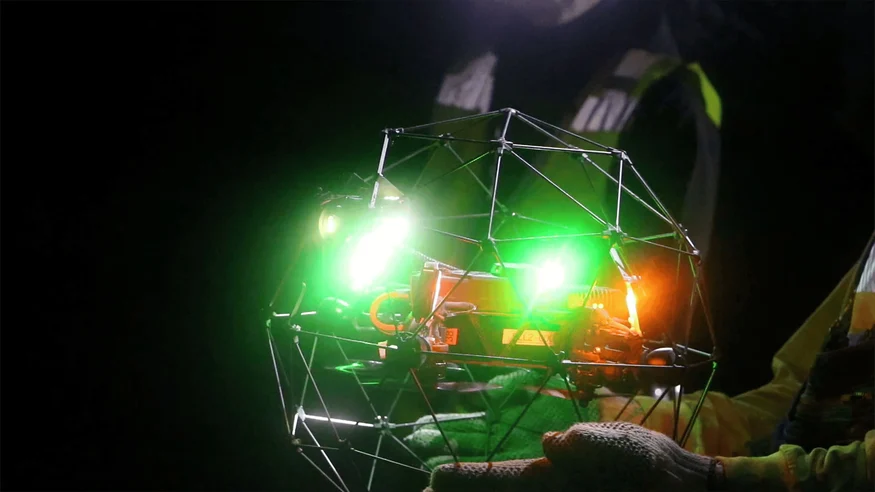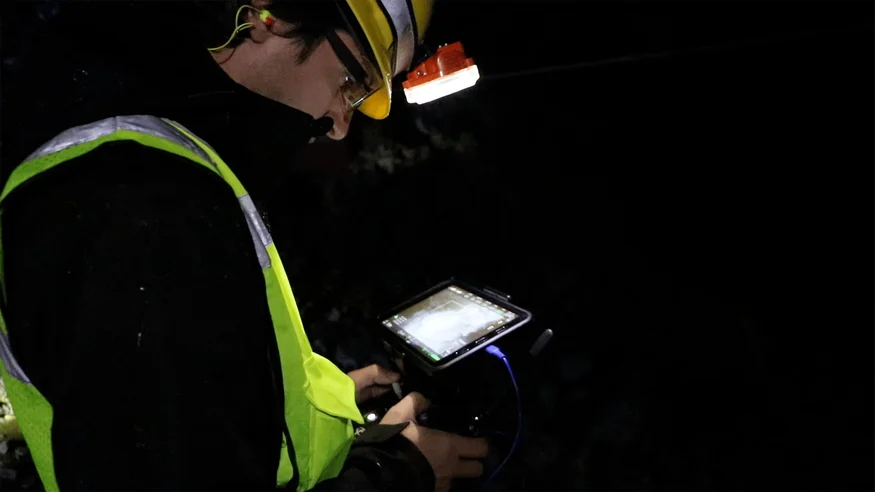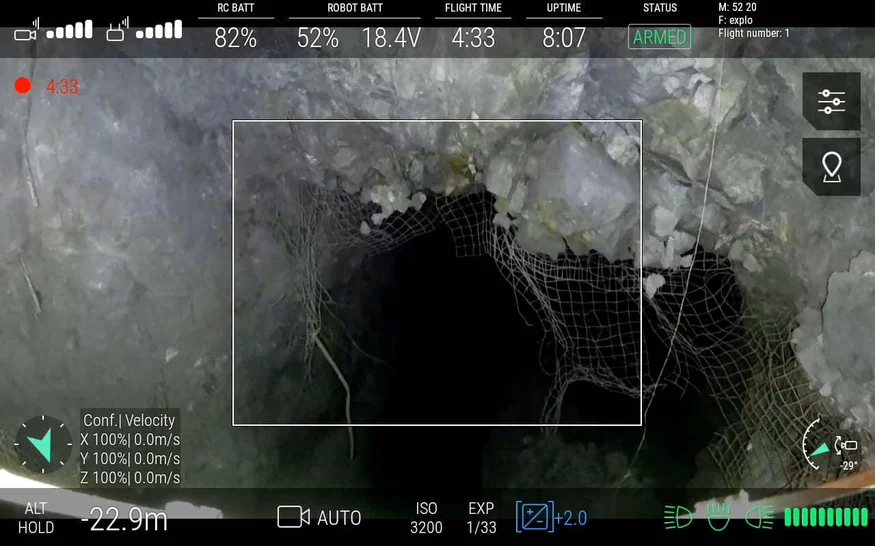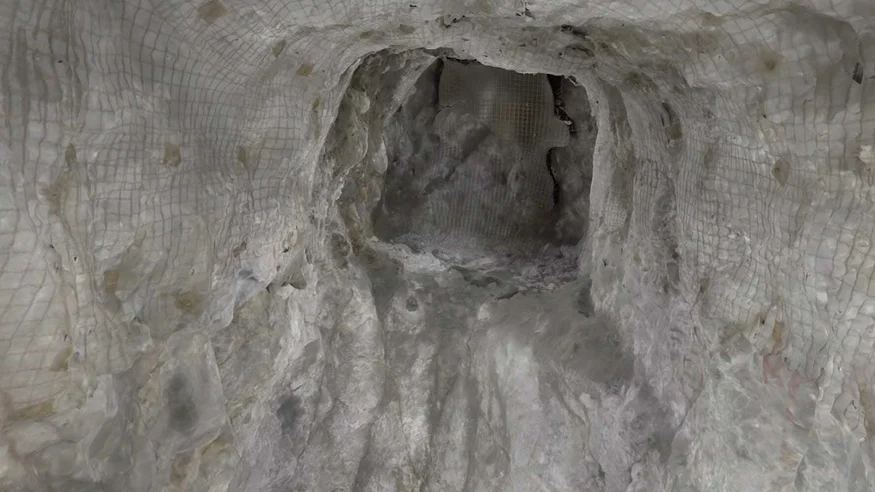Drones have become a common tool in the mining industry for mapping open-pit mines, but exploring underground spaces remains a significant challenge. The Elios 2 from Flyability offers an advanced solution, bringing photogrammetry capabilities into the dark and GPS-denied environments of underground mines. Safety By capturing visual data from dangerous areas, the Elios 2 allows for safety assessments that were previously impossible, reducing the need for workers to enter hazardous zones. High Quality Data The drone delivers high-definition 4K video and images, providing detailed insights for operations, engineering, and safety teams during ongoing stope development. Ease of Use With its stable flight and durable caged design, the Elios 2 ensures thorough inspections without the risk of crashing in tight or complex mine environments. For three days, Flyability’s Elios 2 was tested at Barrick Gold Corporation’s Golden Sunlight Mine in Whitehall, Montana. This compact drone, designed specifically for confined space inspections, was put through its paces to evaluate its performance in challenging underground conditions. Matt Mackinnon, founder and president of Unmanned Aerial Services, Inc., who specializes in underground inspections, served as an advisor in the development of the Elios 2. His goal was to showcase how the drone could enhance mining operations by improving safety and access to critical visual data. The results exceeded expectations. “The way the drone flies, its stability, distance control, and ability to access tight spaces are all impressive. The image quality and new lighting system make it ideal for underground inspections,†said Matt. Using data collected by the Elios 2, Mackinnon and the Flyability team created a 3D photogrammetric model of a stope—a large area left after ore extraction. This visual data helps mining personnel assess the current condition of the stope, identify loose materials, and locate remaining ore and geotechnical features. After blasting, large rocks can remain suspended inside a stope, posing a serious risk. These rocks can fall unexpectedly, damaging equipment and endangering miners. Traditional inspection methods are limited—using cameras lowered from above or inserted on poles only provide partial visibility. This lack of information about stope stability not only endangers workers but also puts expensive equipment at risk. Muckers, which cost over a million dollars each, can be damaged if they operate in unstable areas due to insufficient data. Additionally, missing ore or dilution from waste material can lead to financial losses. Visual data is crucial when an ore pass becomes clogged, and the cause needs to be identified quickly. Barrick Gold wanted to gather enough visual data using the Elios 2 to create a detailed 3D map of a stope, ensuring safety, protecting equipment, and preventing ore loss. [Related read: What is a LiDAR drone?] The Elios 2 conducted multiple inspections across several stopes at the Golden Sunlight Mine. Ryan Turner, a geotechnical engineer at Barrick, worked with Matt Mackinnon and the Flyability team to oversee these missions. “The Elios 2 is easy to use, safe to interact with, and has a protective cage that prevents damage to people, objects, or itself,†said Turner. The Elios 2 successfully navigated both large spaces (up to 10 x 30 x 100 m) and tight shafts with less than 3 meters in diameter. Its powerful lighting illuminated even the largest areas, and the protective cage prevented damage during collisions with wires and support bolts. The drone collected more accurate and comprehensive data than traditional methods. It revealed mixed material on the stope floor and captured sharp, high-quality images of geological structures, enabling stability analyses and risk assessments. “The imagery looked really good,†said Turner. “We were able to see where structures were releasing material.†The Elios 2 also provided important data on the location of large boulders and the condition of loose material above mucker operations, helping determine risks to personnel and equipment. Turner noted that the Elios 2 was easy to fly and remained stable during inspections, allowing for careful scanning of entire walls. Even employees with no prior drone experience were able to operate it successfully. “It's rare to find a drone that's easy to fly and works well underground,†said Turner. “Most previous attempts ended in crashes. With the Elios 2, we flew five drones over three days without losing any.†“You can hand this drone to someone who’s never used it before, and they’ll succeed,†he added. Over four flights, the Elios 2 collected enough data to create a 3D photogrammetric model of a stope using Pix4D Mapper. These models offer a snapshot of the site’s condition and reveal the full volume of the excavation. Geotechnical engineers like Turner can use these models to compare before and after conditions, track rock movement, and conduct stability analyses. Clicking on specific points in the model allows inspectors to view original images and examine geological features in detail. These models help in planning future mining activities and identifying potential hazards. They ensure better decision-making and safer operations. The Elios 2 has revolutionized how mining companies like Barrick Gold and UAS Inc. approach underground inspections. Now, they can safely access areas that were once too dangerous, collect vital visual data, and make informed decisions based on accurate 3D models. With the Elios 2, geology and engineering teams can optimize ore control, perform stope reconciliation, and reduce risks. It also helps protect valuable equipment and personnel, potentially saving millions in lost production and repair costs. This article is part of a series on photogrammetry: Connector Connectomere,Steel Small Motor Housing Parts,316L Steel Small Motor Housing Parts,Stainless Steel Small Motor Housing Parts Dongguan New Decoration Material Technology Co., Ltd. , https://www.xsjmim.comMining Drones: Elios 2 Creates Photogrammetric Models
Key Benefits at a Glance
Introduction

Customer Needs
Solution

Results

Photogrammetric Mapping—In Testing And Development

Conclusion